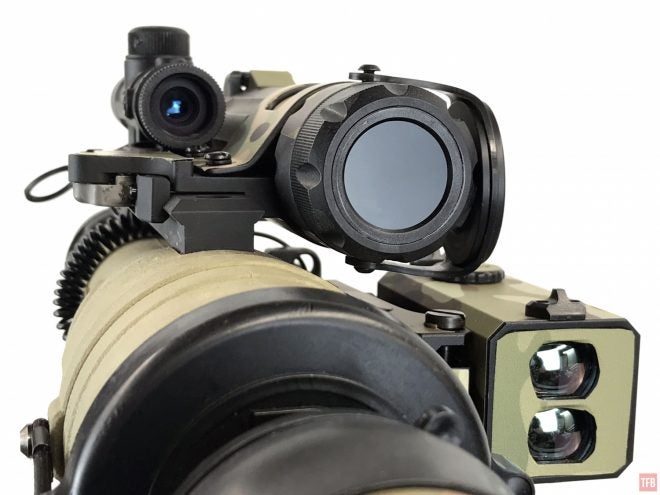When shooting or observing with night vision at longer distances, you might need to add some supplementary illumination. Carbines set up for night vision usually have a multi-function aiming laser (MFAL). In a previous Friday Night Lights, I went over the most popular full power MFALs. While these can work for long-range shooting with a clip-on, they are expensive and for the most part, you are using a scope to aim so you don’t need an infrared pointer. There are two standalone IR illuminators, the Luna Optics LN-ELIR-3 and the Steiner SPIR. We will take a look at both.
Steiner Optics SPIR
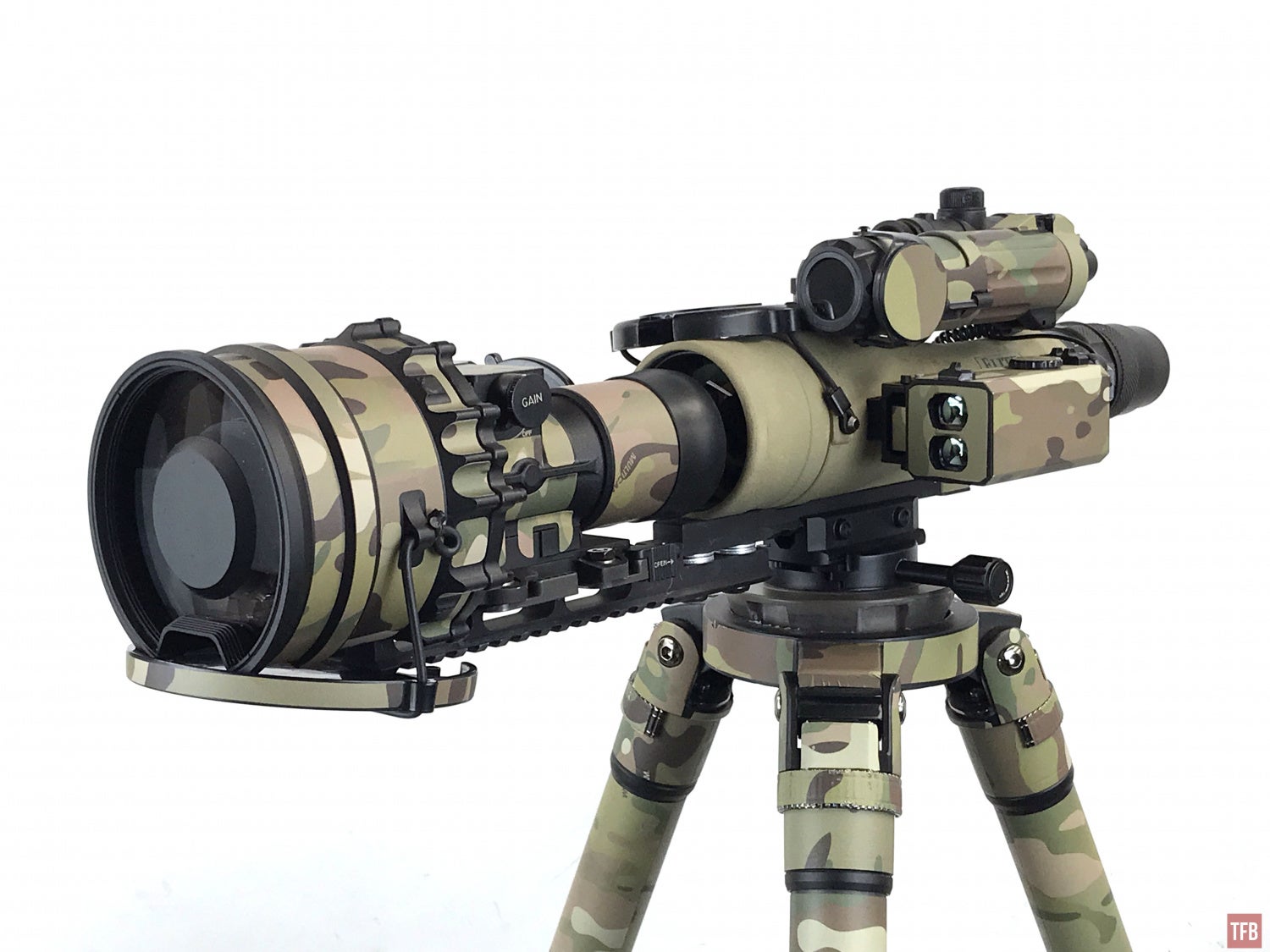
The Steiner SPIR stands for Special Purpose IR Illuminator. It is basically the same IR illuminator in the Steiner DBAL-D2. It is an LED-based illuminator that has a high and low mode. It puts out 600mW on high and 300mW on low.

This SPIR is wrapped in a Multicam vinyl wrap.
Just like the DBAL-D2, the SPIR has a lens cap to block off the bezel and prevent accidental discharge of the IR illuminator.

At the rear of the SPIR body is the tail cap. You can see it has a three-position switch: OFF, LOW and HIGH. Just below and to the left of the switch is the same tape switch port that DBAL lasers use. And above that is the fire button. If you had the SPIR on a long gun, it may be helpful to run a tape switch so you don’t have to reach so far forward to activate the SPIR. The FIRE button is momentary but a simple double click of the button, or a plugged-in tape switch, will force the SPIR to stay on. Below the three-position selector switch is a low-intensity LED that indicates if the SPIR has been activated and is emitting IR light. 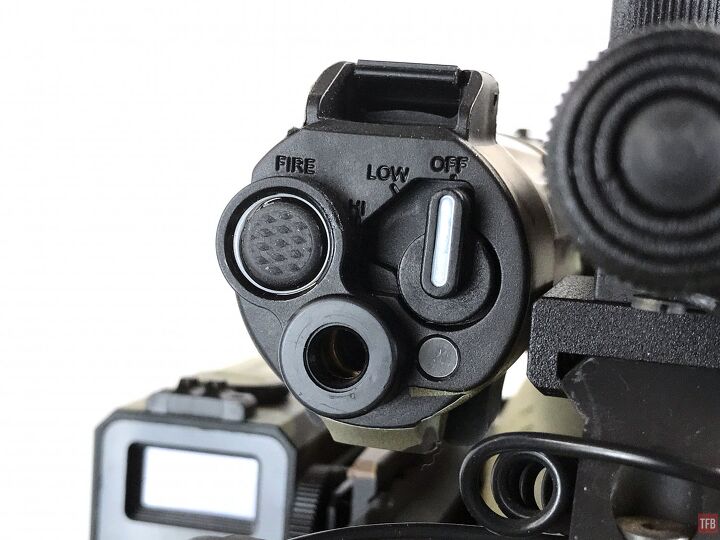
The tail cap hinges open to reveal cavities for two CR123 batteries. The two batteries are inserted in the same direction which means they are in parallel rather than in series. This makes some sense since the DBAL-D2 is powered by a single CR123. I believe the SPIR uses the same LED so power consumption should be similar. The second CR123 is just to increase capacity and run time for the SPIR.

The SPIR is mounted to a gun or spotting scope with their HT mount that uses a similar throw lever like a DBAL.

Photo by Steiner USA
You can open the mount, flip the SPIR 180º and have the SPIR hang lower or higher depending on the orientation of the mount and which rail you attach it to.


The SPIR still has the old LASER DEVICES company molded into the housing. Unlike the DBAL-D2 which has a milled aluminum body, the SPIR is polymer.

Here are some comparison pictures next to a DBAL-0D2.

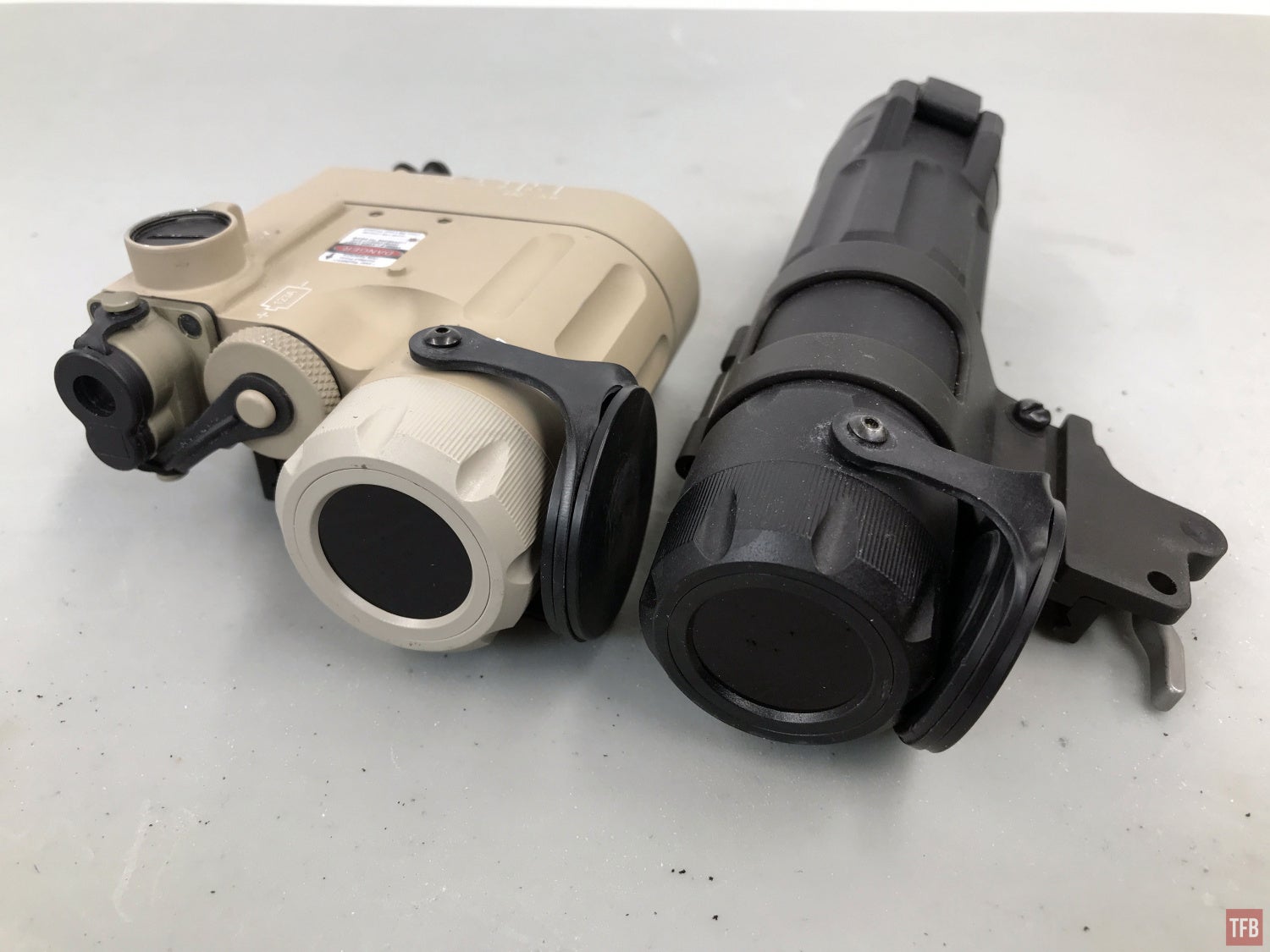

I wish the SPIR had a similar form factor as the DBAL-D2 illuminator. Just fold the rear of the SPIR forwards so everything is in a more compact setup.
I found the offset mount to not always move the SPIR far enough away from accessories mounted on my spotting scope or a gun. But the offset does all for hanging the SPIR low which helps clear the beam from catching on any parts of the clip-on or the gun.


This is the tightest the SPIR illuminator beam can be tightened. It is a clean and smooth illumination beam pattern. This is why the DBAL-D2 and SPIR are worthwhile for illuminating at long range. The building below is 530 yards away from where I took this photo.


Moonless night, looking through white phosphor Elbit XLSH tubes. The building is 530 yards away and the SPIR IR beam is lighting it up.
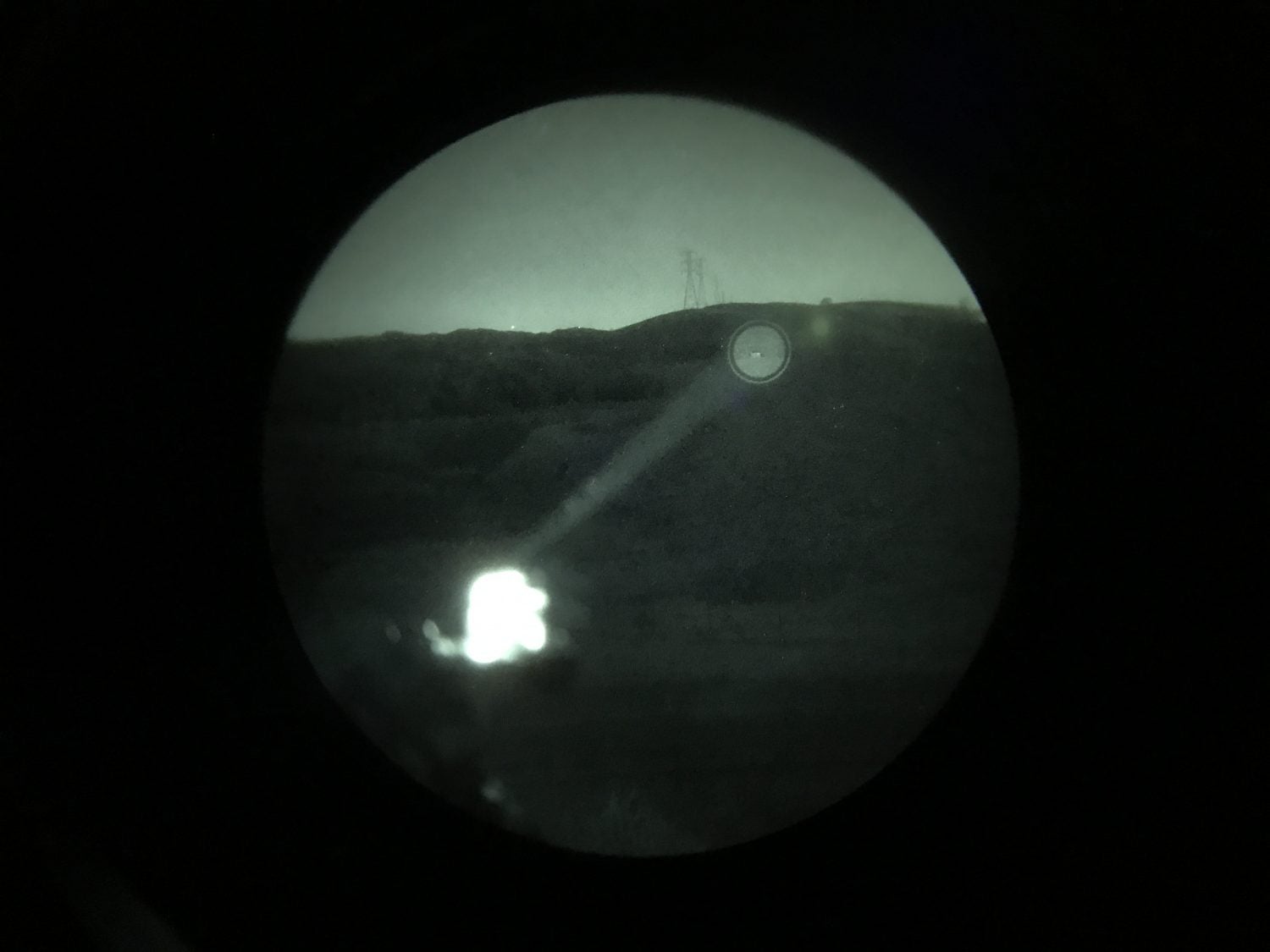
Luna Optics LN-ELIR-3

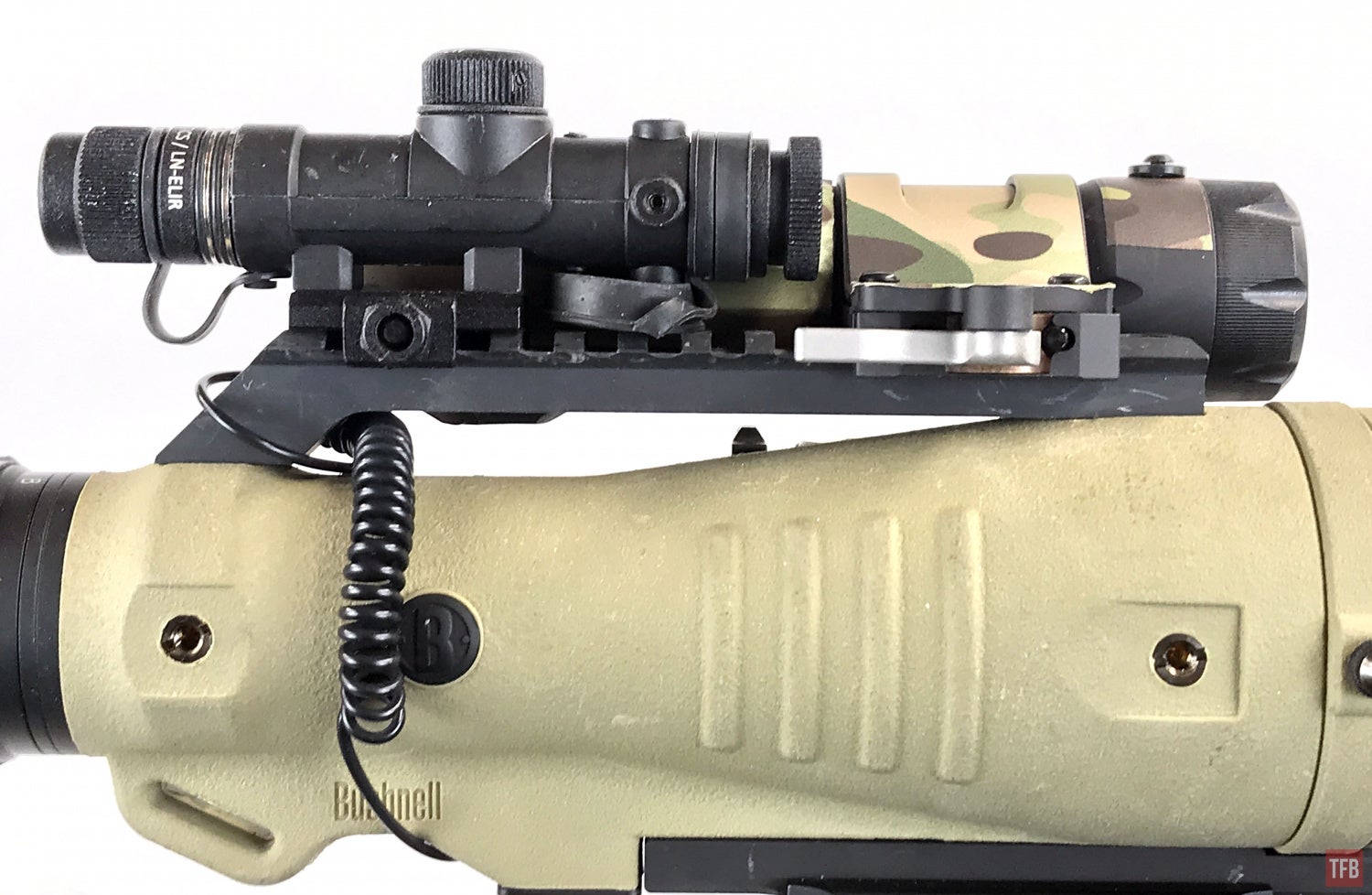
While the SPIR is adequate for illuminating the night, it is an LED-based illuminator. The Luna Optics has that thermal laser range finder I reviewed almost a year ago. Well, their LN-ELIR-3 is a laser illuminator and it is much smaller than the SPIR.
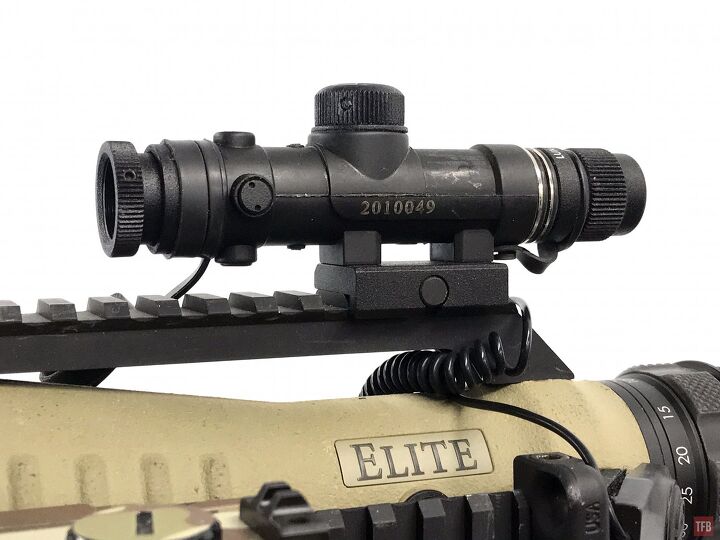
The ELIR-3 is pretty basic. It is powered by a single CR-123. It has a tail cap with a small activation button on it. The front objective can be rotated to widen or tighten the laser beam.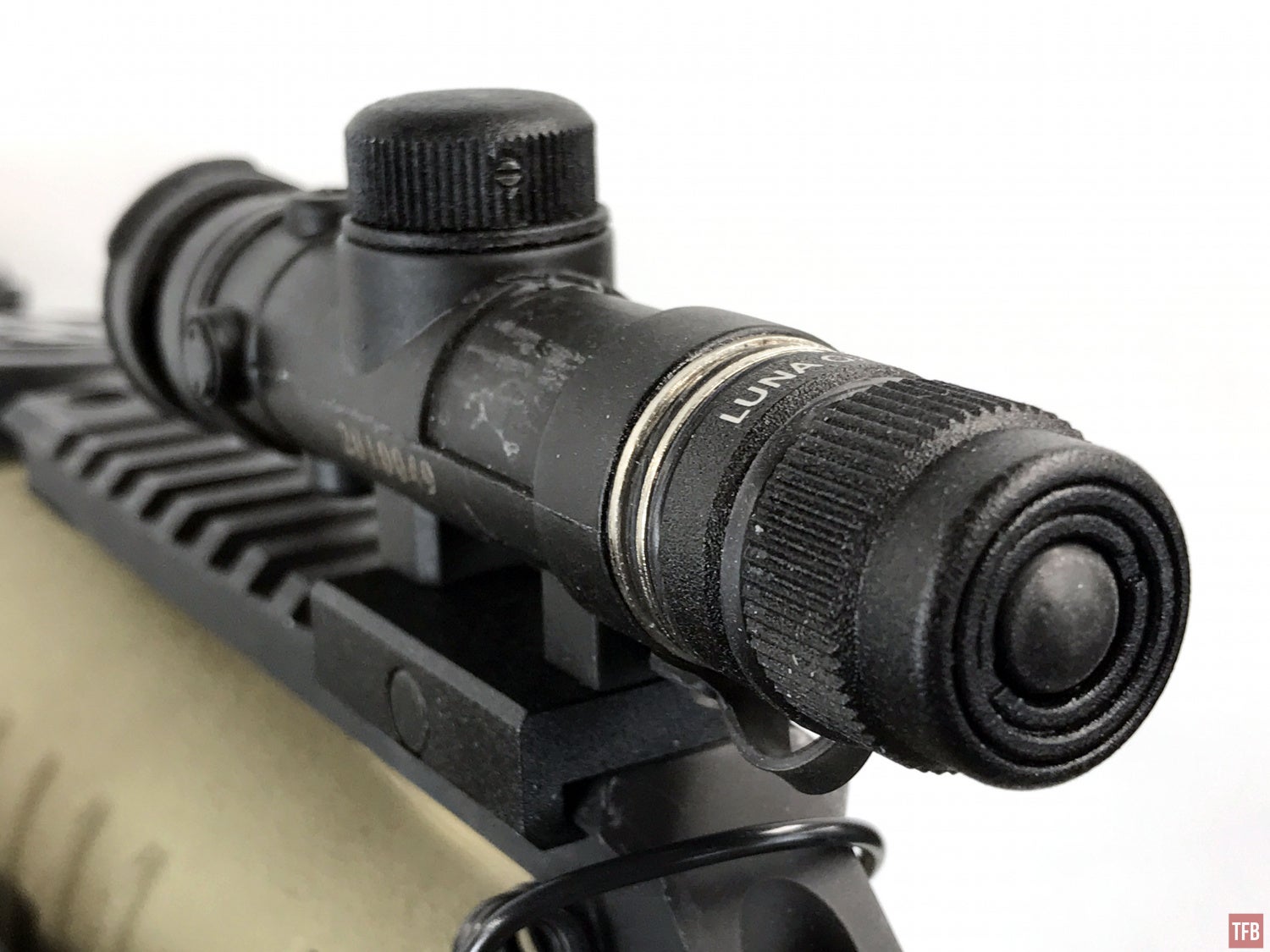
When turned on, there is a faint fiber optic indicator that glows green.

At the top of the ELIR-3, there is a potentiometer that can turn the ELIR-3 intensity up or down. If you turn the dial to zero you can hear an audible click indicating the ELIR-3 has been turned off. You could leave the tail cap button pressed in and just use the rotary switch to power on the ELIR-3.

The fit and finish of the ELIR-L3 look a bit crude but it gets the job done. Also, you can see four adjustment screws. These control elevation and windage adjustments.

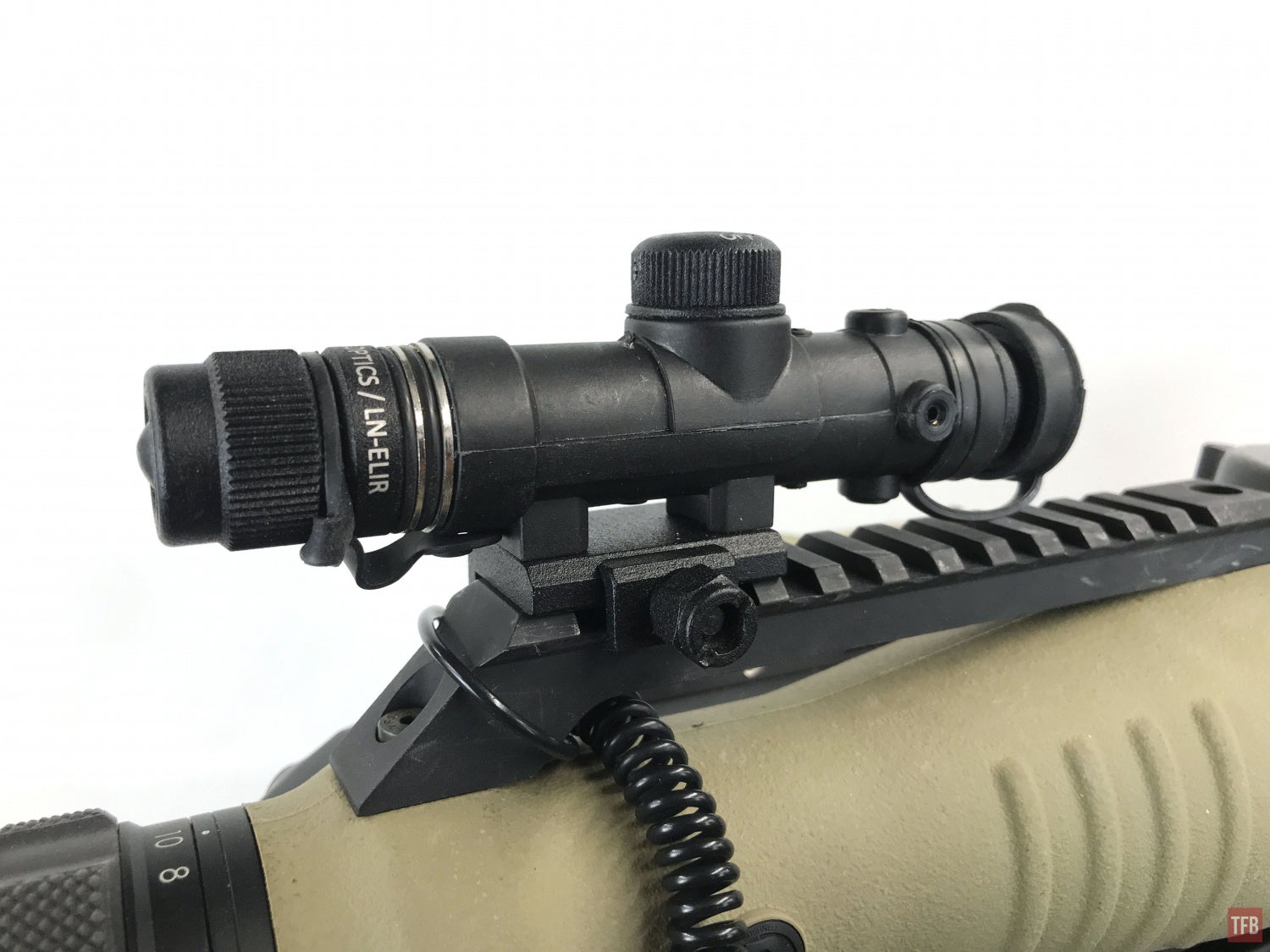
You can mount the ELIR-L3 directly to a Picatinny rail. I have it sitting on top of my spotting scope. Luna Optics also offers a tail cap adapter so you can attach SureFire tail caps and tape switches.
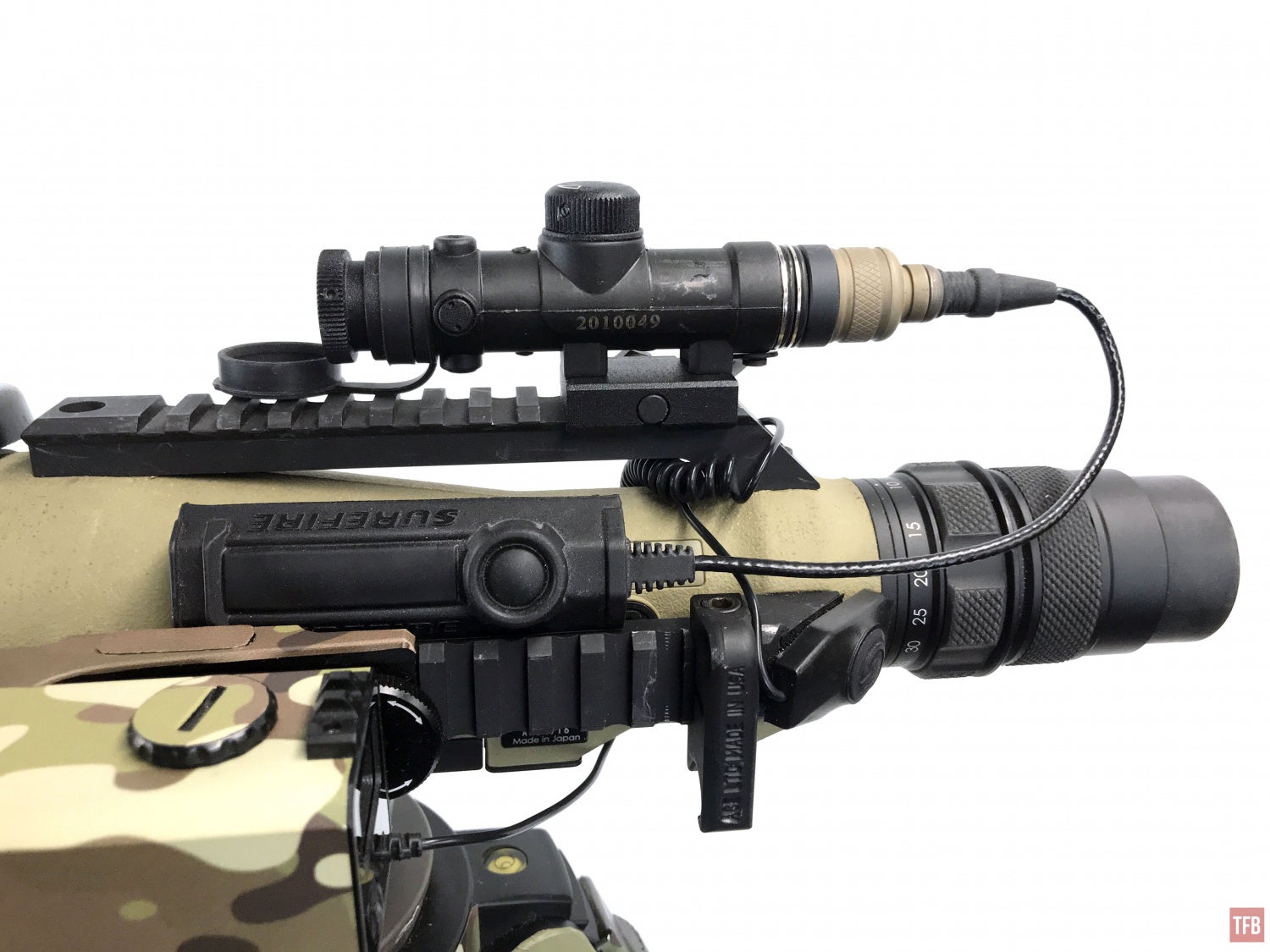
There is a slight issue with the SureFire adapter. The hole in the center is too narrow to fit most SureFire scout light tail caps. I have tried it with a number of E-Series tail caps (which are compatible with Scout Light style bodies. Only a newer style tape switch tail cap was able to fit onto the SureFire adapter.

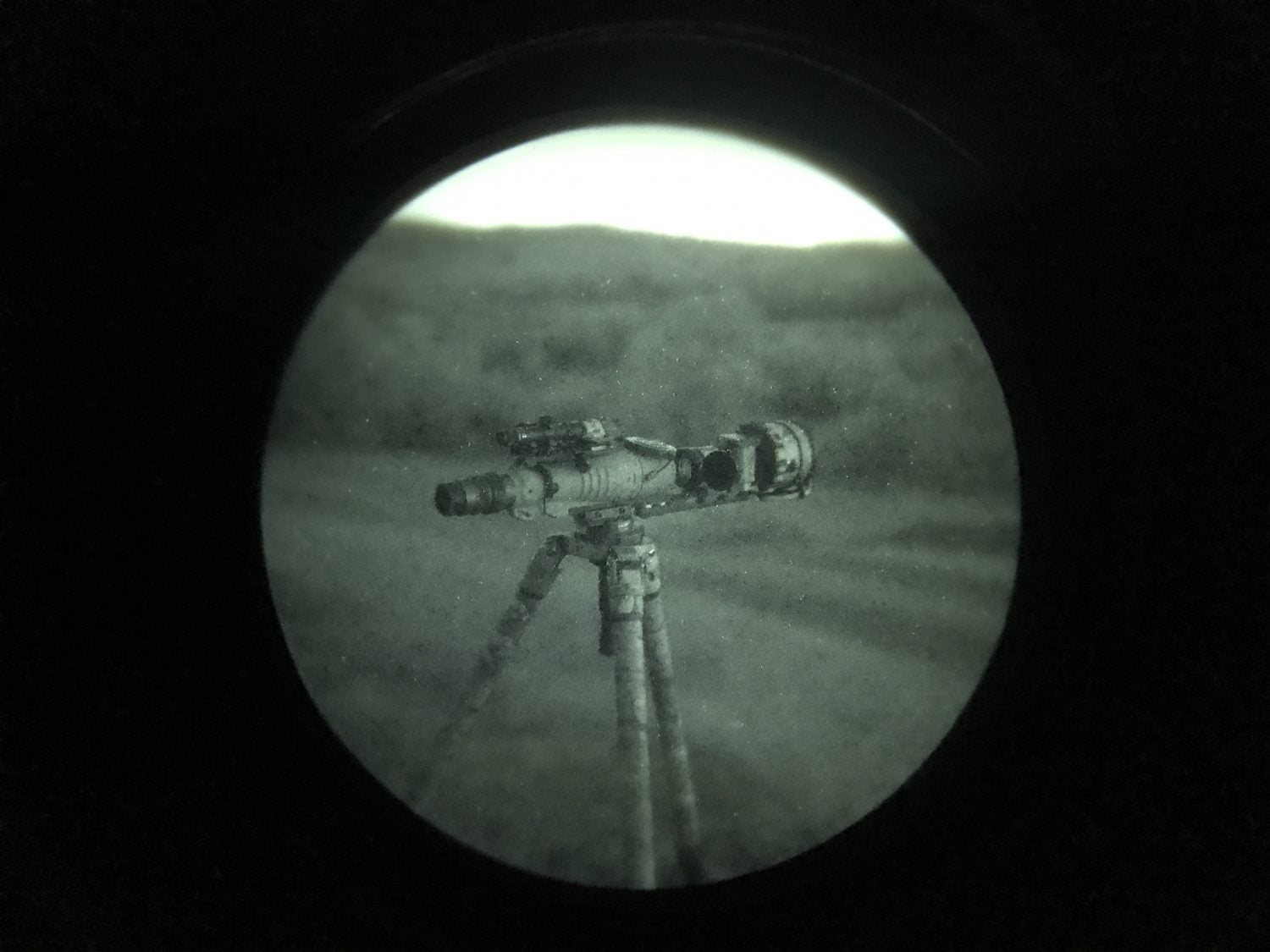

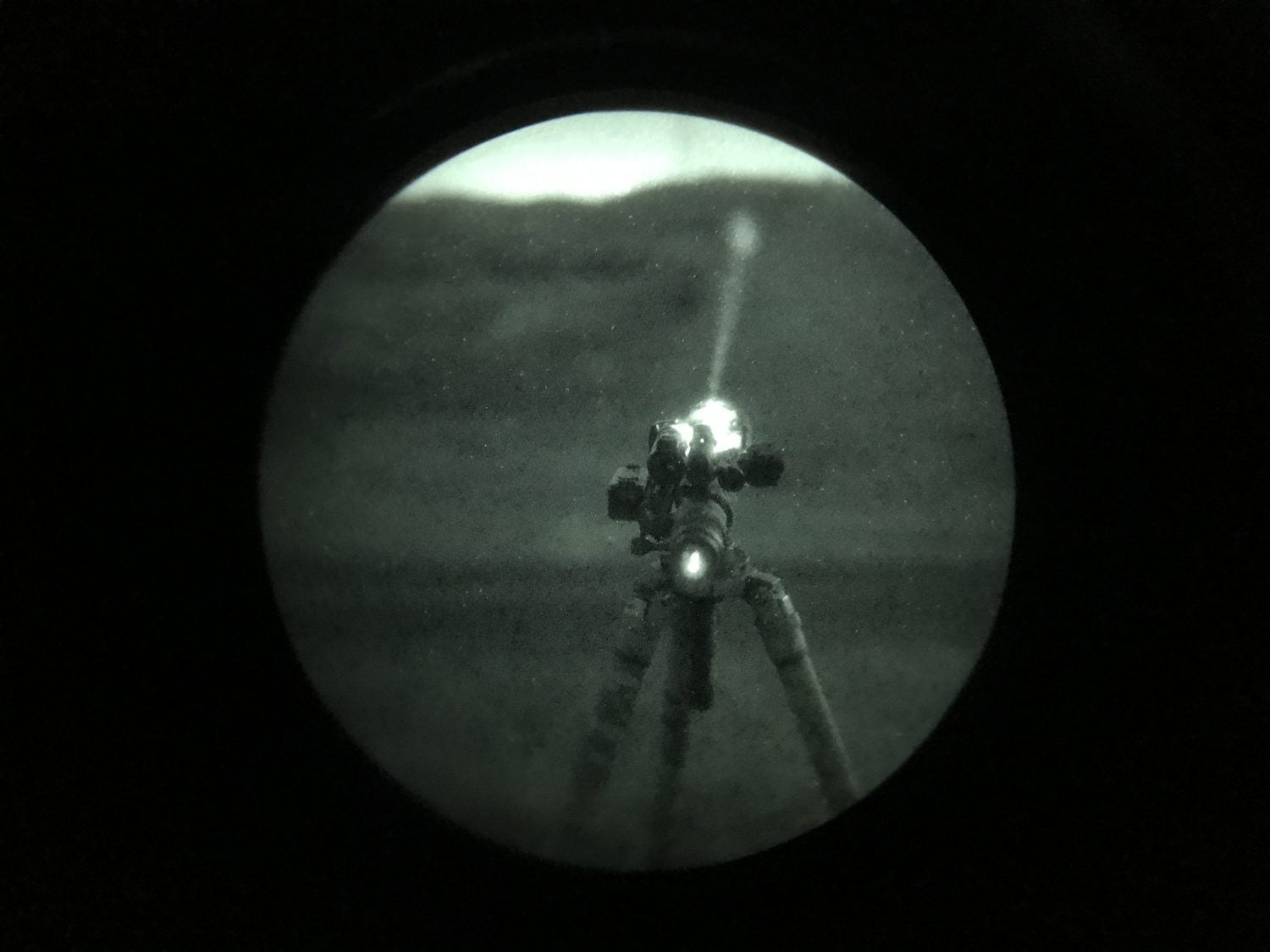
The Luna Optics ELIR laser illuminator is not your standard 850nM or even 940nM. Instead it is at a lower wavelength. It is 750nM. While it is still considered infrared, it is a bit more visible than the SPIR or other laser illuminators like my MAWL-C1+.
Shining against a white wall about 5 feet away, I can clearly see the dot it projects with my naked eye. I tried to capture it with my iPhone camera.
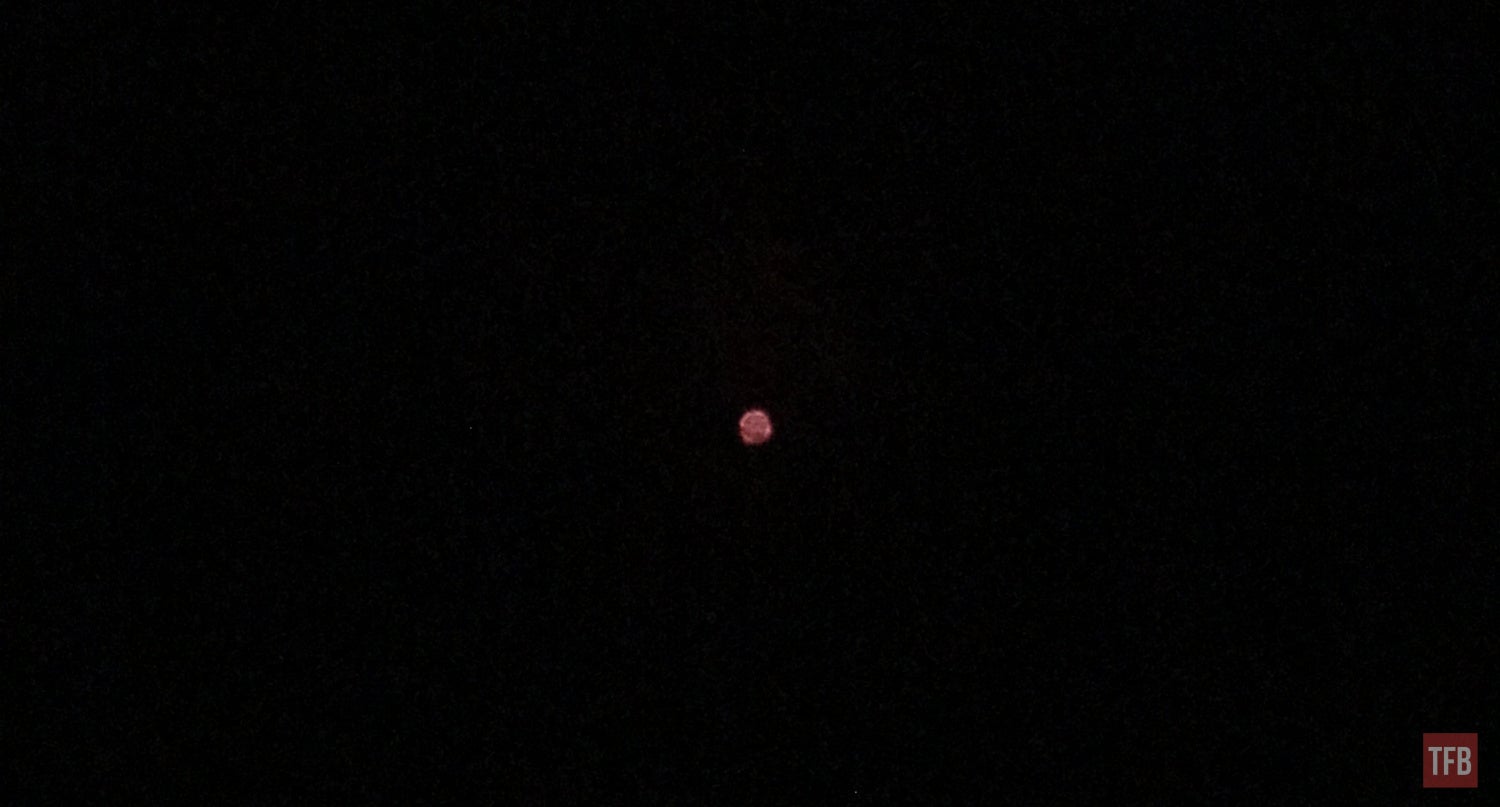
I also tried looking at the ELIR illuminator with my Aurora Black on the night setting which can see into the infrared spectrum. I discovered something interesting about the ELIR-3, it remains visible even under infrared. Any light or laser that produces IR shows up as purple on a full spectrum camera like the Aurora. However, the ELIR shows up as orange or sort of like a warm color temp incandescent light. I thought this was rather strange so I performed a series of tests. I grabbed a large infrared filter for a large flashlight. This filters out everything but lets infrared light through. The ELIR still shows up orange. That should not be possible. Any visible laser, like red or green, is blocked by this filter but the orange laser makes it through. I then grabbed an IR cut-off filter, this blocks infrared light from shining through and it blocks most of the ELIR laser. Very very strange.
I reached out to CompassCall aka Carpe Nocturnem and he said that the ELIR is sneaking through the IR filter.
The wavelength is right in the transition between vis and nir so acting as sort of a Trojan horse to cut through filters and ir longpass. Pretty tricky wave length, those Belarus optics guys are pretty smart.
He told me that there was some debate, a while back, regarding the ELIR and some people were claiming it was spooking game. Other experts said that is impossible since it is IR. I do not know the science behind what animals can or cannot see, but this laser illuminator is certainly not your standard IR laser illuminator.

The building is 530 yards away. Moonless night

ELIR shining at building on a moonless night.
Last Illuminating Thoughts
The ELIR comes with a filter to make it eye-safe. If you remove this filter, the laser is much brighter and probably not eye-safe. Do so at your own risk. What makes the ELIR so attractive is its price to performance. It can clearly illuminate out to 1000 yards with a good clip-on and it only costs $350. The Steiner SPIR retails for $842 on Amazon. MSRP is $913.99. That is rather pricey for an LED flashlight. The DBAL-D2 performs exactly the same and costs $1500 but you can typically find them for around $1200. I rather buy a DBAL-D2 for just a little bit more. Since the IR illuminator is so wide, it does need to be aimed and the mount holds zero. So you could use it for a carbine but if you want to use it for a night vision equipped spotting scope or a long-range gun with a clip-on, you could. If the SPIR were cheaper like $400-$500, then I could see it being a more viable option. For more information on the SPIR go to Steiner’s website. If you want to know more about the ELIR, go to Luna Optics’ website.
We are committed to finding, researching, and recommending the best products. We earn commissions from purchases you make using the retail links in our product reviews. Learn more about how this works.
 Your Privacy Choices
Your Privacy Choices
